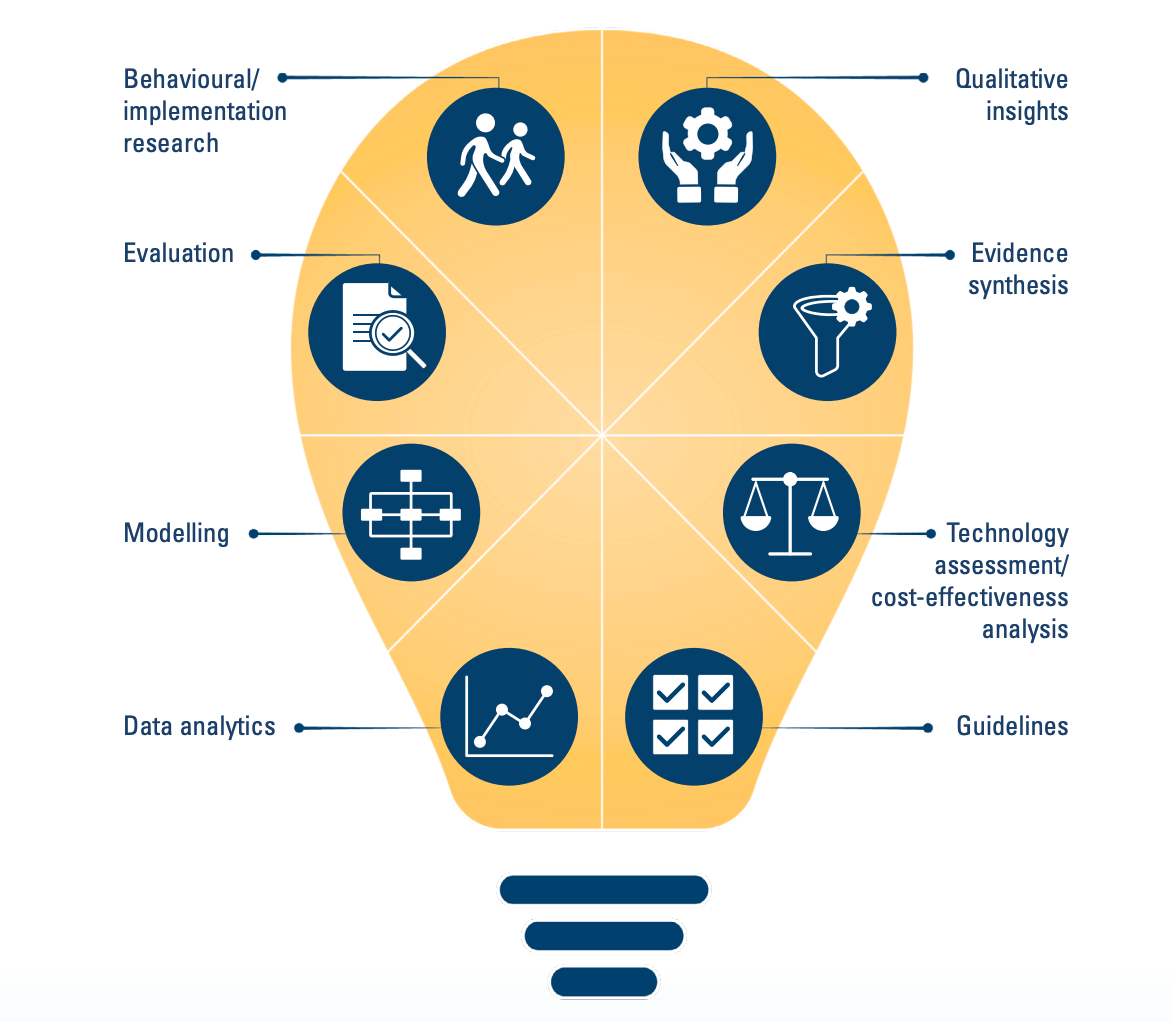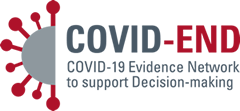FAQs
What is COVID-END?
COVID-END stands for COVID-19 Evidence Network to support Decision-making. This network was initiated in 202. COVID-END involved nearly 60 partners from around the world who came together to support decision-makers to respond to the pandemic. Decision-makers included policy-makers from all relevant government sectors, public-health agencies, health and social care providers, and members of the public, like you. The key goal of COVID-END was to help everyone find and use the best available research evidence so they could make good choices in how they respond to the pandemic. It also improved coordination among researchers around the world, and thus reduced duplication of efforts. This will allowed us to move faster and further together.
For example, without a network like COVID-END, different groups in dozens of countries scrambled to find all the existing research evidence on, say vaccine effectiveness against the new variants of concern. Remember that new evidence is generated all the time! So, COVID-END helped these groups to find what was already out there, all in one place. That made it easier for them to find what was useful for their work. It can also helped them figure out what kind of information was still missing and worked with researchers to fill the gaps.
Decision-makers made various types of decisions to respond to the pandemic. They needed evidence to understand what was known about:
- public-health measures to prevent or control the spread of the infection (for example, vaccines, wearing masks, physical distancing, testing, and quarantine);
- clinical management of COVID-19 (for example, how to treat the infection and pandemic-related conditions such as mental health and addiction issues);
- health-system strategies (for example, how to improve the capacity of hospitals to respond to a surge of severely ill COVID-19 patients, and how to improve the delivery of virtual care during the pandemic); and
- economic and social responses (for example, how schools and public transit should be adapted, and how to maintain essential services).
Whilst it’s true that COVID-END focused a lot on providing resources to the people who support government, public health and healthcare decision-makers, the perspectives of citizens, patients, service users and other members of the public were an important part of its work. Members of the public were also making decisions on a daily basis, such as following public-health measures and recommendations, and opting for in-person or online school and other activities. We could all benefit from having the best evidence at our fingertips.
What is evidence?
We used the term ‘evidence’ as a short form for ‘research evidence.’ In a broad sense, evidence refers to any systematic observation in order to establish facts and reach conclusions.
Evidence is typically encountered in decision-making in eight different forms. For more details about each form, click here.

Evidence can help in any of four steps in a decision-making process:
- understanding a problem and its causes;
- selecting an option for addressing the problem;
- identifying implementation considerations; or
- monitoring the implementation of an option and evaluating its impacts.
What is an evidence synthesis?
Making decisions based on the findings of a single study can be ill-advised. A single study may have been poorly done, may not tell us enough, or may be biased. We also have more confidence when multiple good studies have similar findings. The best answers are found by synthesizing (or combining) the findings of all the studies on the same topic.
This short video explains what is an “evidence synthesis” and how it is useful to everyone making decisions.
You may have heard the term “systematic review” because it is the most common form of evidence synthesis. During the pandemic, researchers had to produce evidence more quickly and constantly update it as new studies were published. This resulted in many “rapid reviews” to bring together the evidence in a shorter time frame.
The pandemic has also created a huge demand for what’s known as “living evidence syntheses”. Think of this as a report that evolves as things change and new evidence emerges over time. Because of the rapidly evolving nature of the pandemic, new evidence is being generated every day. Living evidence syntheses are thus crucial to keep up with the pandemic.
What is a plain-language summary?
Plain-language summaries are often how the findings of evidence syntheses are presented to the public. Plain language is about explaining things using everyday words. Plain-language summaries describe what studies have found, but they are written in language that people without a background in science can understand. It is the ideal way to communicate evidence, without all the jargon and technical terms.
Plain-language summaries can help you to base your decisions on the best available evidence. By having a better understanding of current pandemic research, you can also be better prepared for conversations with your care providers, friends and families.
The plain-language summaries that COVID-END produced can be found here.
Why engage the public in evidence syntheses?
COVID-END was committed to ensuring that the perspectives of the public were woven into its work for two principal reasons:
- Policies and guidelines impact everyone’s lives. So, it made sense that everyone’s experiences should be taken into account when decision-makers created these policies and guidelines.
- We all live together and the choices we made to manage the pandemic in our everyday lives had an impact on us, our loved ones, our neighbours, and everyone else around us. Every day, people made major contributions to COVID-END,
doing things like:
- identifying issues important to them when making all kinds of decisions about how to respond to the COVID-19 pandemic;
- telling us how well new evidence synthesis was speaking to their questions;
- telling us what kind of research they wanted to see and how to involve them in this research;
- helping us ensure that pandemic strategies reflected their values and insights, and that no one was left out; and
- offering ideas to help guide the work of the COVID-END network.
